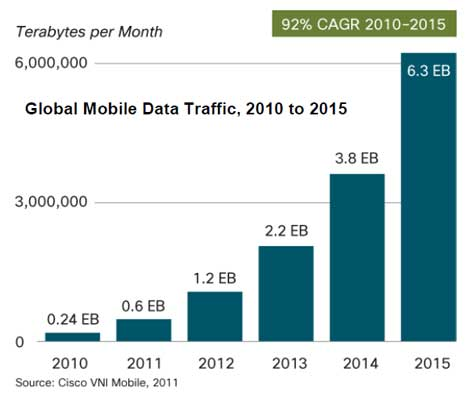The rapid surge in the number and importance of driver-assist and mobile devices is pushing “networked” to the front of the value chain, according to Joachim Taiber, Research Professor at Clemson University’s renowned International Centre for Automotive Research (CU-ICAR). Other market drivers of networked vehicles include the adoption of permanent real-time communication via social networks, the transfer of content to the “cloud”, the dependency of the vehicle – especially electric vehicles (EVs) – on energy and communications infrastructure components, and the processing of payments for items like location-based services.
Speaking at a recent Networked Vehicle Association Executive Workshop, Dr. Taiber laid out three future scenarios arising from this drive to the network:
Autonomous Driving: The technical feasibility of driverless driving has been demonstrated, and remote-control driving has been demonstrated in the military. The opportunity remains for finding a way to ensure permanent
radio connectivity to the vehicle.
Unlimited Range:
The principle of wireless energy transfer via induction has been discussed intensively in research- and developer circles. The opportunity arises from the need to optimize the efficiency of energy transfer, and reduce the costs of infrastructure.
All Mobility-related Services Are Offered Via “The Cloud”
Vehicles have been in demonstration mode for several years now, that connect to the LTE network for streaming of videos and services. Opportunity arise from the need to provide sufficient network capacity, and to create new service applications that meet demand and are of high quality.
In servicing the opportunity for vehicle communications, a consensus is developing around a central fact: the fact that the consumer is used to utilize newest hardware and software for communication services. The lesson for auto makes: this demand should not be unnecessarily constraint by the vehicle or its baked-in systems.
Rise of the Electric Vehicle
While EVs make up a small percentage of cars on the road today, new U.S. federal standards to increase fuel efficiency to reduce CO2 emissions are important drivers for electro-mobility – opening the door to new opportunities in this field.
EVs have particularly aggressive needs for networking, to find the battery-optimum routes between charging stations, and to interact with payment systems. Beyond that, with increasing urbanization more flexible and connected multimodal mobility concepts are needed. Further, the bidirectional energy flow between the grid and the EV requires a significantly high communication activity. Building up a suitable energy infrastructure (smart grid) is in the early stages.
Regional Issues and Evs
Different parts of the world are adapting to the EV future in ways either constrained by the past or looking to the future.
In the U.S., the highway infrastructure is funded largely by the gasoline tax. These funds are declining and do not allow massive investments in the required communication infrastructure to optimize the use of the public road network.
The Express Network of China had a total length of 65,000 km by 2009, the second largest after the U.S. and roughly equal to the highway systems of Canada, Germany and France combined. In China the majority of the road network is funded from private sources and collecting tolls is the norm. The development of a powerful communication infrastructure to support the “networked vehicle”
can be implemented rapidly.
In Europe it is a difficult process to implement a unified toll collection system across borders. Traditionally the mobile phone market is fragmented on a national level, therefore the rollout of services in Europe is more difficult than in large national markets.
Today and Tomorrow
In summary: today the opportunity areas for vehicle networking are in:
- Autonomous driving;
- Dynamic wireless energy transfer;
- Seamless communication of the vehicle in multiple networks;
- Permanent connectivity between vehicle and cloud; and
- Vehicle-to-vehicle-communication in a cluster.
Looking back from 2020. Dr. Taiber is forecasting that we will be in a world where:
- Vehicle-to-vehicle communication is introduced – anti-collision
belongs to vehicle standard equipment; - The vehicle occupants can use mobile devices and their most important applications in the vehicle in an ideally integrated manner;
- The most important communication standards to support electro-mobility are introduced;
- 4G-based mobility services can be used from the vehicle;
- Payment of location-based services is possible to do from the vehicle; and
- The range of electrical vehicles is significantly improved compared to today
